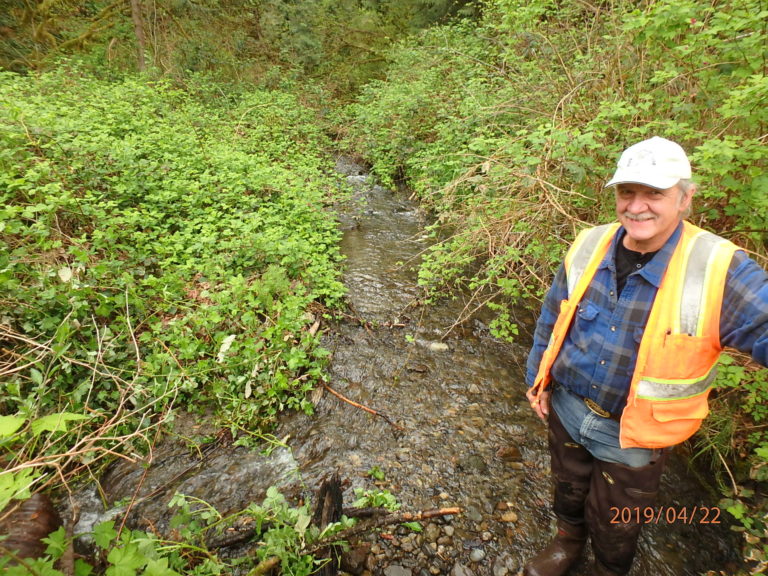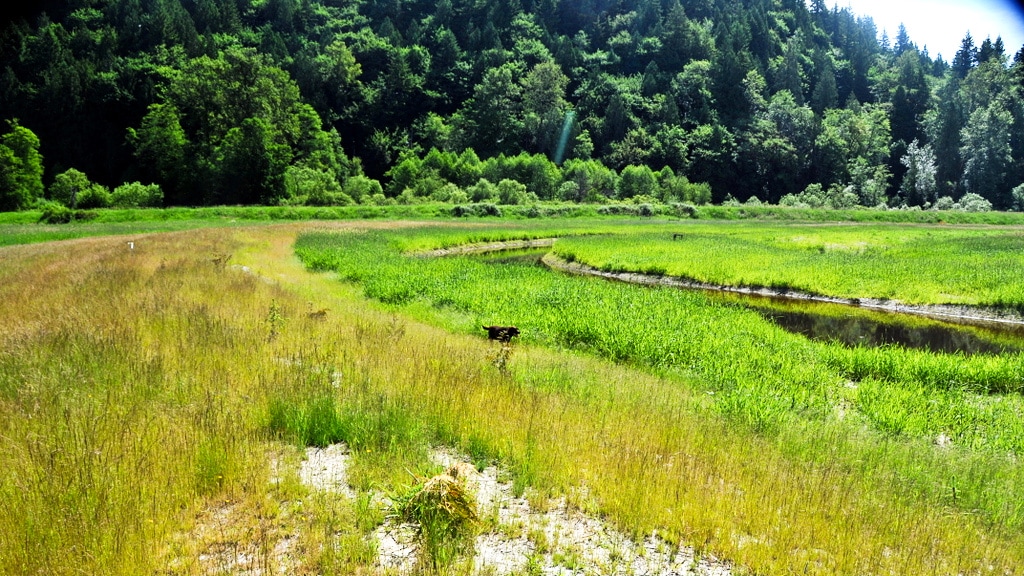

Historically, Cherry Valley, western Washington State, was a vast shrub-scrub wetland, with beaver ponds and patches of wooded wetlands (not unlike the remnant one remaining on a portion of the WDFW property in Cherry Valley) offering a diverse variety of salmonid rearing habitat and access to spawning habitats. During the early part of last century, Cherry Valley was significantly modified to support agricultural practices. To create pasture land, the mainstem Cherry Creek was ditched, straightened, and a levee and pump house were constructed to reduce flooding. These changes severely compromised salmon habitat in the Cherry/Snoqualmie floodplain, reducing the availability of off-channel high-flow refuges, juvenile rearing areas, and adult spawning grounds.
Through its 2001 Salmon Recovery Board-funded feasibility study, Wild Fish Conservancy (WFC) prioritized actions to improve salmon habitat in Cherry Valley while meeting stakeholder drainage requirements. To reconnect the present-day mainstem Cherry Creek with its historic channel five connections between the ditched mainstem and the historical mainstem were excavated, lowering the bed-elevation and increasing salmon spawning and rearing habitat. Engineered Log Jams (ELJs) will be created at the upstream and downstream extents of the reconnected historical channel to control potential bank erosion and provide additional fish habitat. Finally, a bridge was installed to provide access to service the existing pump station.
Location | Start Date |
|---|---|
WDFW Cherry Valley Wildlife Unit., Cherry Creek, a tributary to the Snoqualmie River, King County, western Washington State | 01/01/2008 |
Project Type | Completion Date |
|---|---|
Habitat Restoration | 05/31/2013 |
The goal of the project is to improve instream morphology and habitat in salmon bearing streams. The objective of the project is to increase instream cover, spawning, and resting areas.
Objectives:
Restore streamflow into 2800 feet of the relict mainstem Cherry Creek to recover the instream and riparian complexity, and channel processes, that were lost when lower mainstem Cherry Creek was ditched and straightened.
Consolidate the flow from three adjacent, parallel drainage ditches to create one naturalized, perennial floodplain tributary with increased complexity and habitat diversity, capable of supporting salmonid rearing and migration year-round.
Evaluation, Outreach, and Education.
Primary Habitats Impacted By Project: | Managing Agency/ Organization: |
|---|---|
Floodplain Riparian habitat | Wild Fish Conservancy |
Project Contact: | Budget or Project Cost: |
|---|---|
Jamie Glasgow | $550,000.00 |
Funding Sources: | Partners: |
|---|---|
Puget Sound Acq. and Restoration Program, Washington State Recreation and Conservation Office Grants | Puget Sound Acquisition & Restoration, King Conservation District, Stewardship Partners, National Fish and Wildlife Foundation, WFC In-kind Match, Washington State Recreation and Conservation Office (RCO) – Snohomish County LE |
Join our mailing list to recieve important updates on our work, the latest wild fish news, & opportunities to take action to support wild fish.
This site is protected by reCAPTCHA and the Google Privacy Policy and Terms of Service apply.
Wild Fish Conservancy is recognized as a 501(c)3 non-profit by the IRS